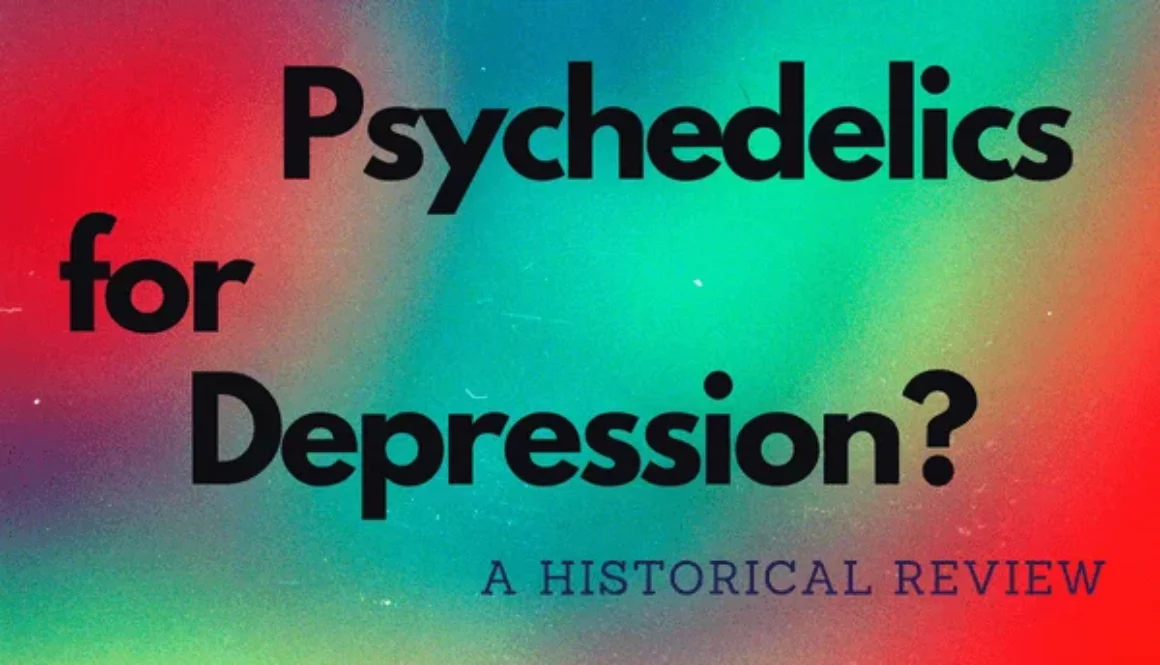Use of Psychedelics to Overcome Depression
The use of psychedelics to overcome depression and other related mental disorders is trending nowadays. Indeed, psychedelics, such as psilocybin (found in “magic mushrooms”) and LSD (lysergic acid diethylamide), have shown promising potential in helping individuals overcome depression. However, it’s essential to approach this topic with caution and acknowledge that more research is needed to fully understand their effects.
But First Things First!
Depression is a major public health issue around the globe. According to the American Psychiatric Association, it is a common medical condition that negatively affects your thoughts, perceptions, and actions. It is characterized by feelings of sadness and loss of interest in activities you once used to enjoy. Depression can not only lead to many emotional and physical health problems, but it also affects the quality of your life.
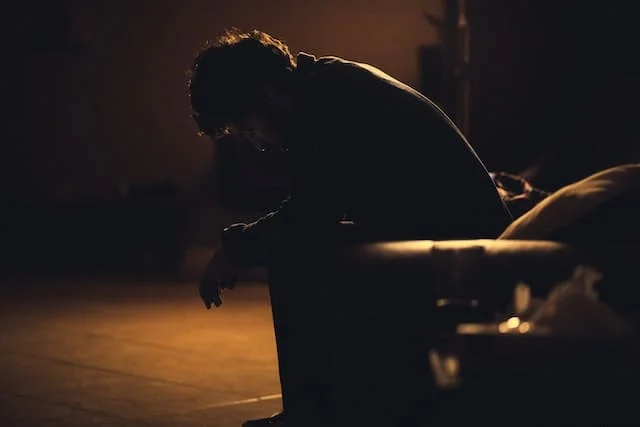
There are various treatments for depression. However, claims are now emerging regarding the use of psychedelics in treating depression. Even some studies have portrayed these drugs as superior to the conventional treatments for depression. Especially in conditions where the individuals are not responding to the existent treatments.
This article is about understanding the role and efficacy of psychedelics in the treatment of depression. In addition, we will dive into the potential explanation behind these therapeutic effects. But before that, let’s see more about psychedelics and their non-recreational use in history.
What are Psychedelics?
Psychedelics, also known as hallucinogens or psychotomimetic drugs, belong to a class of psychoactive substances that alter the perception, mood, and various processes controlling a person’s cognition [1]. They are obtained from plants and mushrooms and also synthetically manufactured by humans.
Psychedelics are broadly classified into classic hallucinogens and non-classic psychedelics. Classical psychedelics are those found in nature and are derived from the naturally-occurring ergotamine. They include psilocybin, DMT (N, N-Dimethyltryptamine), mescaline, LSD, etc. Non-classical psychedelics are newer analogues and derivatives of lysergamides, tryptamine, and phenethylamine.
Use of Psychedelics for Non-Recreational Purposes – A Brief History
The use of psychedelics can be traced back to the ancient Aztec, South American, and non-Western cultures. They used these substances as sacramental tools in their religious ceremonies to alter their minds and communicate with their gods. Shaman, who held the role of doctor and priest, used to lead such ceremonies and guide people through the psychedelic experience to communicate with the spiritual world [2, 3].

In 1938, Albert Hoffman first synthesized LSD, and five years later, in 1943, became the first person to try LSD [4]. Since this landmark discovery, research sprouted to discover the beneficial use of LSD and other psychedelics.
Ten years after the Hoffman discovery, a psychiatrist, Humphrey Osmond started prescribing LSD to individuals with alcoholism or AUD (alcohol use disorder). This was the era when scientists believed that psychedelic therapy could help a person with his mental symptoms and sense of self. According to an estimate, around 40,000 people with varying mental health were administered such drugs from 1950 to 1965 [5].
The Psychedelic Era
By the mid-60s, these drugs, including LSD, had become trendy recreational drugs, and governments ban due to the fear of misuse. This also slowed down the research work. Some psychiatrists shifted their interest towards another compound, MDMA, and found it helpful in assisting various psychotherapeutic processes. But MDMA was also labeled illegal in 1985 [2].
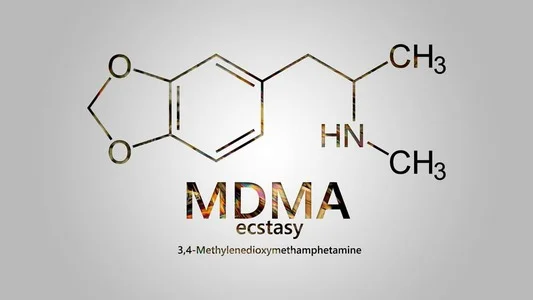
After a hiatus of three to four decades, research into the safe and more in-depth exploration of the potential benefits of psychedelics is blooming again [2]. Research has been conducted to evaluate the efficacy of MDMA-assisted psychotherapy in treating Post Traumatic Stress Disorder (PTSD). Likewise, psilocybin obtained from mushrooms has been tested for treating major depressive disorder, pain, addictions, and some end-of-life mood problems [6].
FDA (Food and Drug Administration) has also recently approved ketamine, a commonly-used anesthesia drug with psychedelic properties, for treating depression in 2019. MDMA has also been tested in phase 3 clinical trials for relieving PTSD symptoms [7].
Psychedelics for Depression Treatment? What does Research Say?
Much research has been done to evaluate the anti-depressant effects of psychedelics. Substantial evidence can be found in the literature which justifies the careful use of psychedelics for the treatment of depression.
For example, a randomized controlled study published in the Journal of Psychopharmacology in 2022, have reported that psilocybin-assisted therapy in patients suffering from severe unipolar depressive disorders had 75% treatment response and resulted in 58% remissions at 12 months without causing any serious adverse effects due to the prolonged use [8].
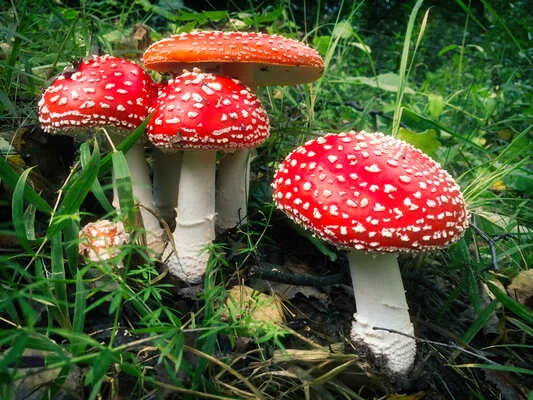
Similarly, a systemic review and meta-analysis of several clinical trials have also concluded that psilocybin is highly effective in reducing the symptoms of anxiety and depression in conditions resistant to conventional pharmacological treatment [9].
LSD has also shown some promising effects in treating anxiety and depressive disorders. An animal study conducted in mice exposed to chronic restraint stress showed that repeated dosages of LSD prevented the worsening of anxiety-like behavior and increased cortical spinogenesis and 5-HT neurotransmission, which have potential therapeutic effects on anxiety and depressive disorders [10].
A 2018 study conducted among humans has also shown similar results. Researchers found that taking LSD as an adjunct to psychotherapy increased the feelings of well-being and satisfaction, resulting in positive mood and behavioral changes, altruistic social effects, and positive attitude towards life among the subjects [11].
Moreover, a study published in the journal, Addictive Behaviors in 2012 has also provided evidence that consumption of 3,4-Methylenedioxymethamphetamine (MDMA), also known as ecstasy, causes a significant reduction in depressive symptoms in people predisposed to depression [12].
Besides, ketamine, as discussed earlier, has already been approved by the U.S. Food and Drug Administration (FDA) for managing severe and treatment-resistant depression.

All these research studies suggest that psychedelics have a potential role in treating depression.
How Psychedelics Help in Overcoming Depression
While the precise mechanism remains unclear, researchers have determined that psychedelics can enhance brain plasticity. The phenomenon refers to the growth of neural connections within the brain.
A double-blind, randomized controlled trial was done to compare the effects of psilocybin and escitalopram (an SSRI antidepressant) among people with depression and analyze them using fMRI brain scans.
Researchers observed that just one day after the first dose of psilocybin, there was an overall increase in the brain’s various networks, which are typically reduced in people suffering from severe depression. Besides, it also resulted in a simultaneous reduction in the default mode networks in the brain, which are responsible for excessive rumination, self-focus, and creating a state of being ‘stuck’ in negative thoughts, a hallmark feature of depression [13].
These effects are attributed to brain plasticity. A study has revealed that psychedelics bind to the 5-hydroxytryptamine 2A receptor (5-HT2AR), the intracellular receptors found in the neurons. In this way, it boosts the growth of structures, known as dendritic spines, which then form new neuronal connections in the brain [14].
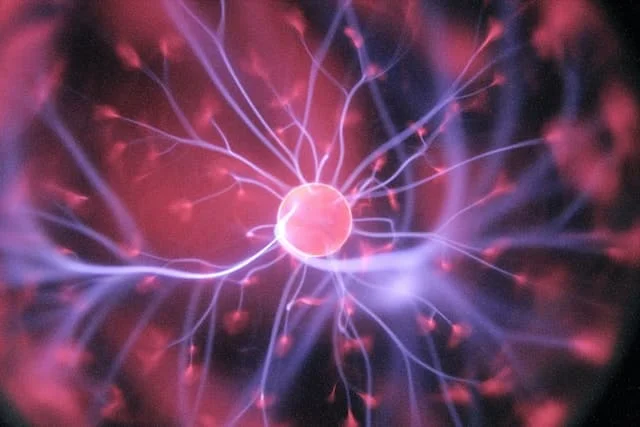
This increased connectivity of different brain areas and suppression of the rumination networks potentially explain the therapeutic effects of psychedelics in treating depression.
Life-Changing Experience (?)
It might also explain the testimonials of people who used psychedelics such as psilocybin, san pedro, ayahuasca, etc. People, after psychedelic use, usually mention strong memories of a particular image, feeling, or realization. This might be because of the increased brain plasticity activity during the use of the drug.
So what does actually happen? Well, people have one experience during the use and because of the increased neural growth activity, this experience became such a strong memory that they refer to it as it is happening now! If this is the case imagine the capability that psychedelics hold, if they are used in a controlled and supervised environment.
Summary of the possible mechanisms
- Neuroplasticity and Neurogenesis: Psychedelics have been suggested to promote neuroplasticity and neurogenesis in the brain. Neuroplasticity refers to the brain’s ability to reorganize itself by forming new neural connections, while neurogenesis is the generation of new neurons. These processes are believed to play a role in mood regulation and may help counteract the negative thought patterns associated with depression.
- Altered Perception: Psychedelics can induce altered states of consciousness, which may allow individuals to gain new perspectives on their lives and experiences. This altered perception can lead to increased introspection and self-awareness, enabling individuals to confront and process unresolved emotional issues.
- Increased Emotional Openness: Many people report that psychedelics can lead to heightened emotional sensitivity and openness. This emotional vulnerability can facilitate the exploration of repressed emotions and traumatic experiences, potentially leading to emotional release and healing.
- Reducing Activity in the DMN: The Default Mode Network (DMN) is a brain network associated with self-referential thinking and rumination which are often exacerbated in depression. Psychedelics have been found to reduce activity in the DMN. This interrupts negative thought patterns and reduces depressive symptoms.
- Connection and Unity: Psychedelics have been reported to foster a sense of interconnectedness and unity with others and the universe. This feeling of connectedness can counter feelings of isolation and provide a sense of purpose and belonging.
- Attitude Change and Optimism: After a psychedelic experience, individuals often report increased optimism and a more positive outlook on life. This shift in attitude may contribute to a reduction in depressive symptoms.
Modern-Day Use of Psychedelic-Assisted Therapies in the Treatment of Depression
Due to the emerging claims regarding the antidepressant effects of psychedelics, the use of psychedelic-assisted psychotherapy is increasingly being employed in modern practice and research.
For example, the Center for Psychedelic Research and Therapy at the Dell Medical School, the University of Texas at Autism, is using psychedelic-assisted therapy to improve the health of patients suffering from anxiety, severe depression, PTSD, and substance use disorders.

Similarly, psychiatrists and mental health experts at the California Center for Psychedelic Therapy offer such treatment to manage various mental health conditions, including depression.
The Current Top-3 Uses of Psychedelics for Depression
- Psilocybin-Assisted Therapy: First of all, psilocybin! It has been a focal point of research. Clinical trials have shown promising results in using psilocybin-assisted therapy for treatment-resistant depression. In these trials, patients are administered a single or a few doses of psilocybin in conjunction with psychotherapy sessions. The therapy is conducted in a supportive and controlled environment, and patients often report profound and sustained reductions in depressive symptoms.
- Ketamine-Assisted Therapy: Ketamine, an anesthetic with dissociative and psychedelic properties, has been used off-label for the rapid treatment of severe depression. It has been particularly effective for individuals who have not responded well to traditional antidepressant medications. Ketamine-assisted therapy typically involves intravenous or intranasal administration of ketamine in a clinical setting, with therapeutic support before, during, and after the experience.
- MDMA-Assisted Therapy: MDMA, commonly known as ecstasy, is being investigated for its potential in treating post-traumatic stress disorder (PTSD) and related depression. Although not a classic psychedelic, MDMA has empathogenic and entactogenic effects, leading to increased emotional openness and trust. In clinical trials, MDMA is used in combination with psychotherapy to help patients process traumatic experiences and reduce symptoms of depression and anxiety.
Bottom Line
Psychedelics are psychoactive substances with hallucinogenic properties and can alter a person’s mood, perception, and cognition. Recent research has proved their potential role in treating severe depressive disorders. Indeed, they help alleviate the symptoms of depression by increasing brain connectivity and suppressing the brain networks associated with negative thoughts in depression. Consequently, many centers are now employing psychedelic-assisted psychotherapy in modern-day research and practice for treating depression.
However, it is important to emphasize that while the preliminary results are promising, psychedelic-assisted therapies are still under investigation. More research is needed to establish their safety and efficacy fully! These therapies are not currently considered first-line treatments for depression. They are typically reserved for cases of treatment-resistant depression or when other conventional treatments have not been effective.
Did you find it helpful or interesting? Share it!
Also, go check out some of our articles, they deserve a reading!
Thanks for reading.
References
- Nichols DE. Psychedelics. Pharmacological reviews. 2016 Apr. 2006.
- Sessa B. The history and re-emergence of psychedelics in medicine. 2006.
- Carod-Artal FJ. Hallucinogenic drugs in pre-Columbian Mesoamerican cultures. Neurología (English Edition). 2015 Jan.
- Dyck E. LSD: a new treatment emerging from the past. CMAJ. 2015 Oct.
- Petranker R, Anderson T, Farb N. Psychedelic research and the need for transparency: polishing Alice’s looking glass. Frontiers in Psychology. 2020 Jul.
- Carhart-Harris RL, Goodwin GM. The therapeutic potential of psychedelic drugs: past, present, and future. Neuropsychopharmacology. 2017 Oct.
- Matveychuk D, Thomas RK, Swainson J, Khullar A, MacKay MA, Baker GB, Dursun SM. Ketamine as an antidepressant: overview of its mechanisms of action and potential predictive biomarkers. Therapeutic advances in psychopharmacology. 2020 May.
- Gukasyan N, et al. Efficacy and safety of psilocybin-assisted treatment for major depressive disorder: Prospective 12-month follow-up. Journal of Psychopharmacology. 2022 Feb.
- Vargas AS, Luís Â, Barroso M, Gallardo E, Pereira L. Psilocybin as a new approach to treat depression and anxiety in the context of life-threatening diseases—a systematic review and meta-analysis of clinical trials. Biomedicines. 2020 Sep.
- De Gregorio D, et al., Repeated lysergic acid diethylamide (LSD) reverses stress-induced anxiety-like behavior, cortical synaptogenesis deficits and serotonergic neurotransmission decline. Neuropsychopharmacology. 2022 May.
- Schmid Y, Liechti ME. Long-lasting subjective effects of LSD in normal subjects. Psychopharmacology. 2018 Feb.
- Majumder I, White JM, Irvine RJ. Antidepressant‐like effects of ecstasy in subjects with a predisposition to depression. Addictive Behaviors. 2012 Oct.
- Carhart-Harris R, Giribaldi B, Watts R, Baker-Jones M, Murphy-Beiner A, Murphy R, Martell J, Blemings A, Erritzoe D, Nutt DJ. Trial of psilocybin versus escitalopram for depression. New England Journal of Medicine. 2021 Apr.
- Vargas MV, et al., Psychedelics promote neuroplasticity through the activation of intracellular 5-HT2A receptors. Science. 2023 Feb.
